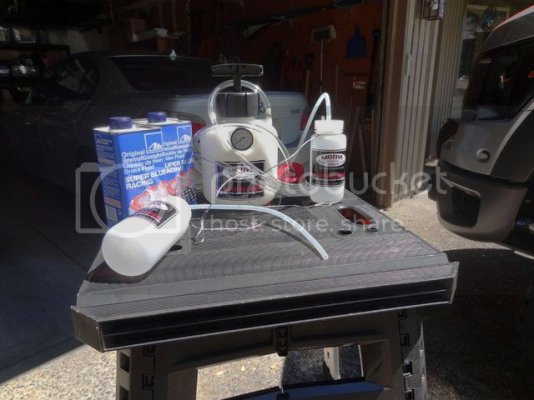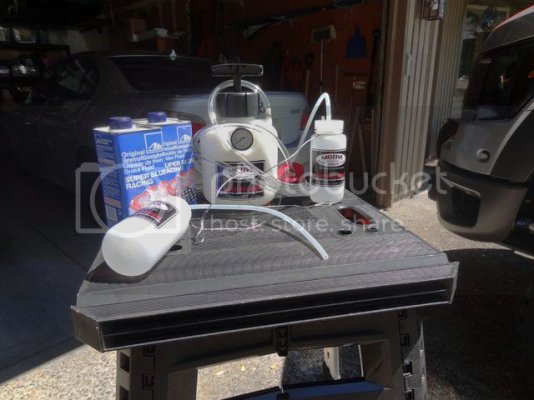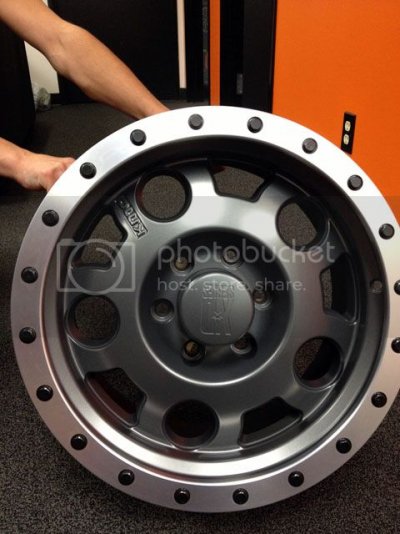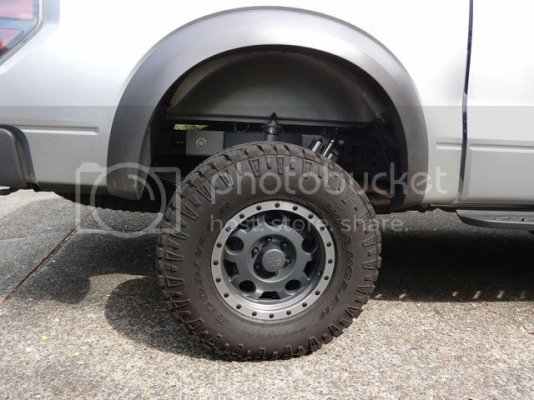Cerberos
Full Access Member
As I mentioned some time ago, I've not been all that happy with the brake performance in our Raptors. However, I also was not thrilled with the idea of moving up to 18" rims in order to accommodate an aftermarket "big brake kit." So, instead I've chosen to make a few upgrades to the stock brakes to see if I can get a performance level that meets my expectations.
First up was switching out the rotors and pads. I had a set of rotors made up by a company that I have used previously for a number of track cars. Basically, just a trued up set of stock rotors with straight slots cut and a good anti-corrosion coating. The only reason I went with custom rotors over EBC, or some of the other well known aftermarket vendors, was my desire to have the slots rotate in the same orientation on both sides of the vehicle. Yep, sometimes I'm a bit **** about details.
I also added a set yellow stuff pads from EBC. This seems to be a good compromise with a semi- metallic brake pad. They deliver low noise and dust, some increased wear on the rotors and a bit more bite when “warmed” up. These pads need just a bit of heat in them to order for them to bite as expected.
After thoroughly bedding the new rotors and pads I set off to a long, rural, straight section of road where I previously ran the stock pads and rotors through some serious abuse. I had also left some marks on the side of the road documenting my informal stopping distances. I doubt the slotted rotors really contribute anything in dry conditions, but the new pads definitely shortened my stopping distance from 60 mph by roughly 10 - 15 feet. Not bad, however, there was an immediate downside. The increased heat from the metallic brake pads induced brake fade much sooner than the stock set up. Not surprising, as I intentionally did not switch out the fluid for a high performance (higher boiling point) fluid.
As I stated above, I don’t believe the slots contribute anything to increased performance in dry conditions. We just don't see the level of gas build-up in these types of braking system for them to be really effective. It takes extremely high brake temperature for prolonged periods to generate the gas levels where slots can really have any sort of impact. But they do look good! Where they do come into play is in wet conditions. Particularly, where you have just crossed a shallow stream or blasted through a puddle on the roadway. I know some of you will argue this opinion, but real world use has convinced me of the benefit.
Next up will be switching out the stock brake fluid to ATE Super Blue Racing Fluid. I already have a bunch of it in the garage for my other cars. I expect this to help address the heat build-up and fading issue. After some testing with the new fluid, I’ll install some metallic braided brake lines.
So, here is how the set-up looks with the new rotors and pads.

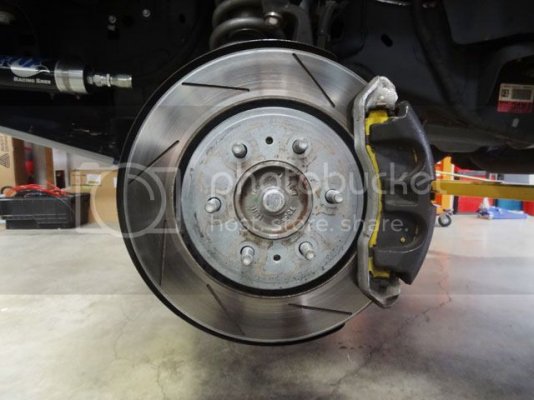
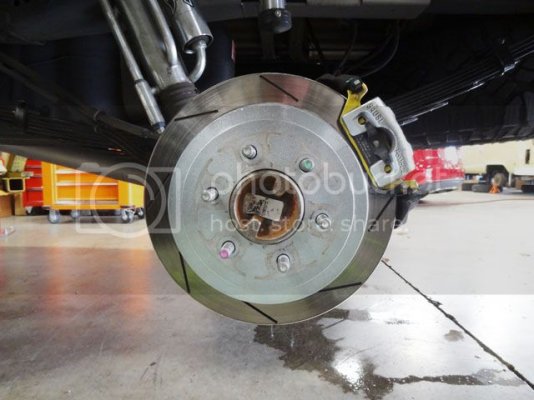
First up was switching out the rotors and pads. I had a set of rotors made up by a company that I have used previously for a number of track cars. Basically, just a trued up set of stock rotors with straight slots cut and a good anti-corrosion coating. The only reason I went with custom rotors over EBC, or some of the other well known aftermarket vendors, was my desire to have the slots rotate in the same orientation on both sides of the vehicle. Yep, sometimes I'm a bit **** about details.
I also added a set yellow stuff pads from EBC. This seems to be a good compromise with a semi- metallic brake pad. They deliver low noise and dust, some increased wear on the rotors and a bit more bite when “warmed” up. These pads need just a bit of heat in them to order for them to bite as expected.
After thoroughly bedding the new rotors and pads I set off to a long, rural, straight section of road where I previously ran the stock pads and rotors through some serious abuse. I had also left some marks on the side of the road documenting my informal stopping distances. I doubt the slotted rotors really contribute anything in dry conditions, but the new pads definitely shortened my stopping distance from 60 mph by roughly 10 - 15 feet. Not bad, however, there was an immediate downside. The increased heat from the metallic brake pads induced brake fade much sooner than the stock set up. Not surprising, as I intentionally did not switch out the fluid for a high performance (higher boiling point) fluid.
As I stated above, I don’t believe the slots contribute anything to increased performance in dry conditions. We just don't see the level of gas build-up in these types of braking system for them to be really effective. It takes extremely high brake temperature for prolonged periods to generate the gas levels where slots can really have any sort of impact. But they do look good! Where they do come into play is in wet conditions. Particularly, where you have just crossed a shallow stream or blasted through a puddle on the roadway. I know some of you will argue this opinion, but real world use has convinced me of the benefit.
Next up will be switching out the stock brake fluid to ATE Super Blue Racing Fluid. I already have a bunch of it in the garage for my other cars. I expect this to help address the heat build-up and fading issue. After some testing with the new fluid, I’ll install some metallic braided brake lines.
So, here is how the set-up looks with the new rotors and pads.



Last edited:


